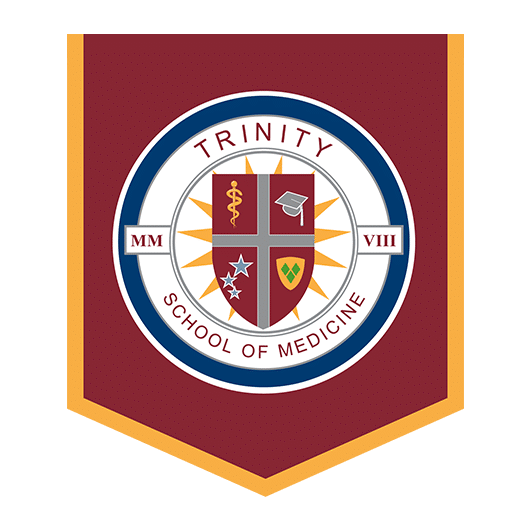After the US Department of Education’s NCFMEA recognized our accreditation as comparable to the LCME, we received a number of questions about Title IV and future plans for Trinity. While we can’t say it won’t ever be an option for us, we are not currently offering Title IV loans for our students. The reasons why are fairly straightforward (it would limit access to Trinity for US students). There are some misunderstandings out there about how Title IV actually works, so we’re going to dive into the entire situation here, today.
We’re also going to cover our newly improved student loan program, and how it’s actually a better deal than the current federal loans out there. Ready? Let’s go.
First, for those who don’t know, when people refer to “Title IV” in higher education, they are talking about Title IV of the Higher Education Act, the section of the law in the US that regulates access to federal student loans.
There is a popular half-truth that the program is a major quality standard in foreign medical education. The reality is Trinity School of Medicine meets every single quality standard as established by Title IV of the Higher Education Act but still, ultimately, cannot enjoy its benefits.
If Trinity Meets the Title IV Quality Standards, Why Doesn’t the School offer Title IV Loans?
There is one specific rule that went into effect in 2008 and dramatically changed the playing field for new foreign medical schools while allowing older programs to remain without adapting. (In fact, in addition to the exemption to this new rule, those schools don’t have to meet the law’s most stringent quality standard). And, speaking frankly, we are currently not interested in adapting our school to meet that rule, as it runs counter to our stated goals.
The rule states that at least 60% of the student body must be made up of non-US citizens. We are a school in St. Vincent & the Grenadines, and we certainly train a number of Vincentian students, but we are primarily a school that exists to open up access to a future in medicine for US and Canadian students. We are also small by design, with an annual intake lower than the average US medical school. If 60% of our student body were made up of non-US citizens, we could only admit around 50 medical students from the United States each year.
We strive to open our doors, not close them. US medical applicants face enough closed doors as is, and addressing the physician shortage in the United States is a top priority at Trinity.
Remember earlier when we mentioned the date this new condition went into effect? Foreign medical schools established prior to 2008 do not have to follow the 60% non-US citizen rule. That’s not their only exemption, either.
The rest of the rules that govern Title IV eligibility for foreign schools are similarly straightforward (and you can read them for yourself here, if you like). Here’s a quick rundown.
- You need to be a medical school, you need to have a campus, faculty, adequate lab facilities, you have to have graduated students for two years prior to applying, and you have to make the language of instruction publicly listed. This is not a difficult bar to clear. Suffice it to say Trinity clears it and then some.
- After that, there’s accreditation. This is where the rules stiffen slightly. A school has to be accredited, and that accreditation has to be recognized as comparable to its US equivalent by the NCFMEA. As we mentioned, Trinity has both.
- Medical schools must require US citizens take the MCAT exam. This is an admissions requirement at Trinity.
- The USMLE Step exam pass rate must be at least 75%. (Trinity’s is 94% stay tuned for some big news on some record breaking scores this year, as well). This is an excellent measure of quality, one we wholeheartedly support.
Remember when we mentioned another exemption, earlier? Similar to that 60% rule, if a foreign medical school that trains US physicians offered clinical rotations in any US state prior to 1992, they are exempt from this major quality standard.
This means a medical school that existed prior to that date could intake a very high number of students, most of them could not pass their licensing exams, and the school can retain access to federal funds.
It’s Worth Knowing: Federal Loans Are Not What They Once Were
Medical students borrowing under Title IV typically use the Grad Plus program. There are already rumblings of major changes to the program, including more stringent caps on how much students can borrow, changes to income based repayment, and the total removal of public service loan forgiveness, specifically for doctors opting to practice in under-served communities.
Even now though, prior to those potential changes, the Grad Plus program is already not what it once was in decades past.
Despite being a federal loan program, borrowers must pass a credit check and often still need a cosigner. There are also lifetime borrowing limits they can come up against that typically require additional private loans on top of their federal loans, depending on what they borrowed for undergrad or prior graduate study, or even the total cost of the school. If the federal disbursement has any subsidization, it also cannot be refinanced with the other loans, locking students in to multiple monthly payments after they graduate.
Federal borrowing is also much more expensive than it once was, to the point that private loans are often a better deal. A fixed 7% interest rate (the current rate for Grad PLUS loans) is simply not competitive anymore.
We Have a Better Option for Trinity Students
We discussed earlier that federal graduate loans have a fixed interest rate of 7%. Trinity School of Medicine’s primary loan partner is Sallie Mae, specifically their Medical School Loan. Thanks to this partnership, there are variable rates hitting 2.5% and fixed rates offered at 5.74%, both of which are a significant improvement over their federal counterpart. There are additional benefits that applicants (and current students) can now enjoy through Sallie Mae’s new, improved loan program at Trinity.
First, the grace period has been expanded. Repayment not only doesn’t begin until 36 months after the completion of school, allowing Trinity graduates to get their feet under them in residency (or, depending on their specialty, actually completing it) before entering repayment. In contrast, the federal grace period is 6 months. Federal borrowers can enter into residency forbearance where they are not making payments, but interest will still accrue and include the origination fees on federal loans. On a loan amount of $188,000 USD, that’s an additional $8,000 on the principal at point of capitalization. There are no origination fees with Sallie Mae’s program at Trinity.
All in, at the very start of repayment, irrespective of interest rates, federal borrowers will already owe an additional $14,000 dollars beyond what our students would owe even if the initial amounts were identical. (see below)
The benefits don’t stop there, though. Click here to read more.
Wrapping Up
There’s no such thing as an opportunity to support our students that we won’t investigate at Trinity. The constant refrain from our graduates, even those that have been with us through our founding and growth, has been that Trinity School of Medicine is a school obsessed with improving itself and offering more for its students. The newly improved Sallie Mae loan program, and the above transparency into the Title IV process are just two examples of that approach in action.
If you’d like to learn more about our tuition, loans, and scholarship opportunities, you can click any of those links. If you have any questions, we’re always here, so feel free to reach out. We’d love to meet you and talk about your future in medicine.

